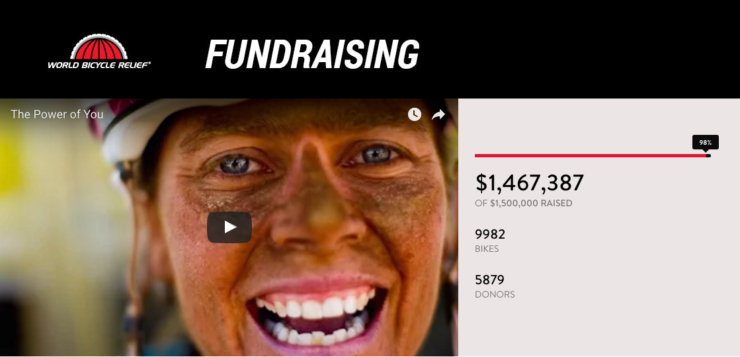Annual funds are traditionally sourced with donations from a mixture of high-net-worth and public donations. Throw in a handful of special events (which are likely to occur on an annual basis) and you’ve got a solid base for the annual fund to thrive.
But there’s a new technique to consider as part of your annual fund fundraising plan: crowdfunding.
What Is Crowdfunding?
Crowdfunding is a fundraising technique that helps a nonprofit, charity, or cause raise funds from a large pool of donors in a short amount of time (usually around one month). Crowdfunding and online fundraising go hand-in hand, and various crowdfunding platforms have been coming onto the scene since around 2010.
Crowdfunding is a great way to match a cause to an audience interested in helping support that cause. Donations from a crowdfunded campaign range in size from $1 to major gifts of $1,000 or more.
“Crowdfunding is a great way to match a cause to an audience interested in helping support that cause …” tweet this
Is Crowdfunding Commonly Part Of An Annual Fund Fundraising Plan?
Oftentimes, no. Since crowdfunding is a relatively new method, many nonprofits have yet to begin using it as part of their overall fundraising plan.
Because crowdfunding involves getting lots of donors involved quickly and easily, many nonprofits assume that it won’t naturally lead to traditional donor engagement, and thus, retention. However, there are a number of ways that you can engage your crowdfunding donors, such as adding them to your email distribution list or connecting via social media.
Crowdfunding CAN help you raise more money for your annual fund, you just have to approach it in the right way. Take the YMCA of Delaware, for example. They’ve successfully used crowdfunding to supplement their strong annual fund campaign.
Here are some questions to ask yourself to find out whether you’re ready to start annual fund crowdfunding.
1. Do You Have Access To The Right Audience?
Start by considering your audience.
- Do you have access to your current donor’s email addresses?
- Are your current donors loyal to the point where they’d be willing to share your annual fund crowdfunding campaign with their own networks?
- Do you have followers on your social media platforms (Facebook, Twitter, Instagram, etc.)
If so, then crowdfunding may be a good option to help supplement your annual fund because you’ll be reaching donors you may not have access to with traditional fundraising methods, such as those without the means to make a major gift and younger donors.
Successful crowdfunding campaign is oftentimes the result of heavy (or possibly viral) online sharing. In order to produce strong annual fund crowdfunding results, you’ll want to connect with your current donors, social media followers, and email contacts to request that they not only consider a donation, but also share the campaign with their friends and family.
2. Have You Chosen A Platform?
Crowdfunding requires an online campaign headquarters of sorts. You’ll need a home base where donors can go to learn about the cause, donate, and stay connected with the annual fund crowdfunding campaign.
Begin by figuring out how much of your annual fund goal you hope to raise through crowdfunding. Then, consider the cost to operate a campaign by way of a crowdfunding platform. Compare the two to figure out which platform best aligns with your goals and resources.
If you’re looking to raise a small amount of money, you may be able to get your service at a discounted (or free) price depending on the platform you choose. Shop around for the best platform that suits your needs.
A great platform will allow you to focus your attention on the campaign and your donors, not the technical “behind-the-scenes” aspects.
3. Do You Have the Time?
Many fundraisers assume that since crowdfunding is usually done online, it doesn’t require a big time commitment. But that’s not true.
You’ll want a dedicated person (staff, volunteer) or two in charge of the campaign. Your crowdfunding campaign lead will need to be on-hand to help coordinate and manage the site, keep social media platforms updated with current campaign information and shareable calls to action, and follow-up with donors.
By allocating a proportional amount of time and resources to your crowdfunding drive as you do your traditional fundraising techniques, you’ll set your annual fund crowdfunding campaign up for success.
4. Can You Illustrate Impact In Your Campaign?
Impact can drive a crowdfunding campaign, especially if a tangible goal based on that impact is established and tracked. If you can quantify and illustrate your work, then crowdfunding may be a big help in increasing your annual fund.
Showing impact can be as simple as telling a story about a client helped by your charity, sharing the donor’s return on investment (ROI), or quantifying your work with donation tiers.
Here’s a great yet simple example of illustrating impact from World Bicycle Relief. They used CauseVox’s impact meter to show the donor the tangible results from the campaign which, in this case, were the number of bikes donated.

With traditional fundraising methods, campaign results and the projected impact aren’t usually shared until well after the campaign is done. With crowdfunding, your donors will appreciate viewing the progression in real-time, which is great for building momentum to supplement your annual fund.
If you’re looking to increase your annual fund using a different technique, consider crowdfunding. It’s a great method to use if you want to share information on your cause’s impact and grow your audience of donors and prospects.




